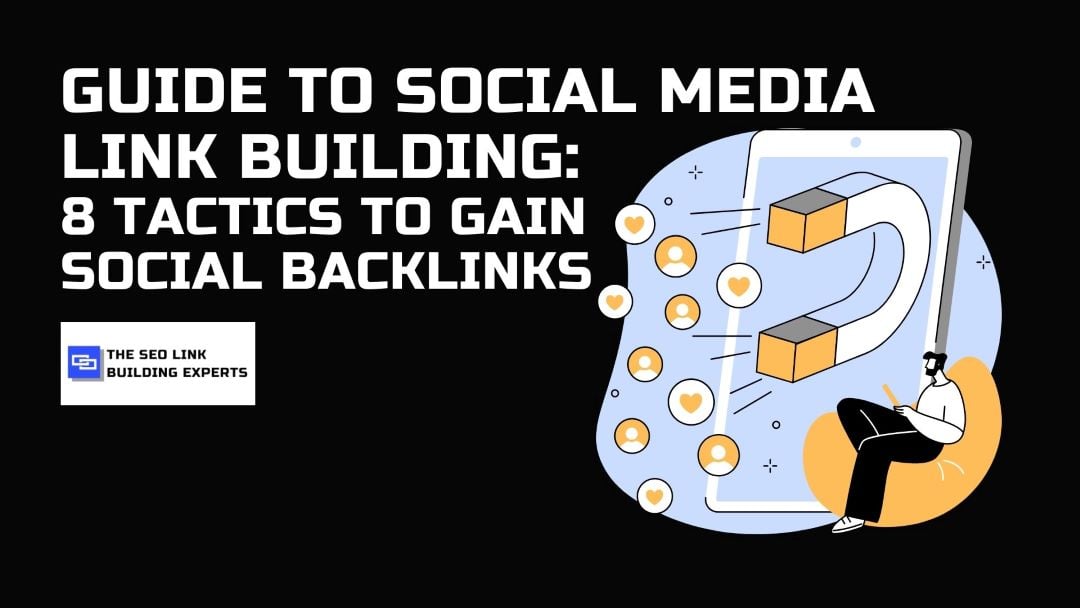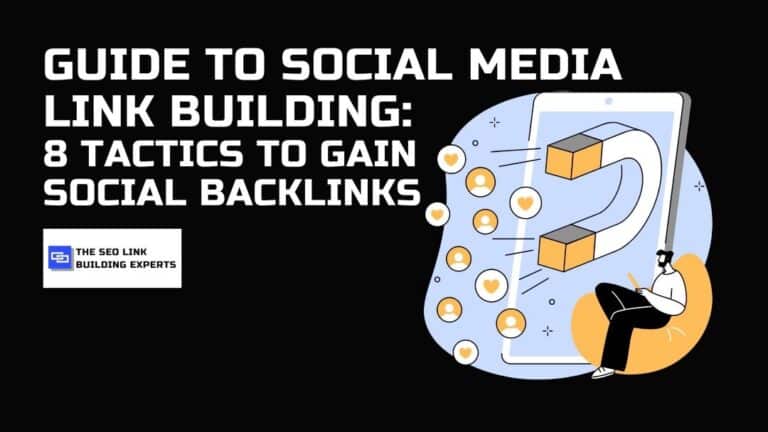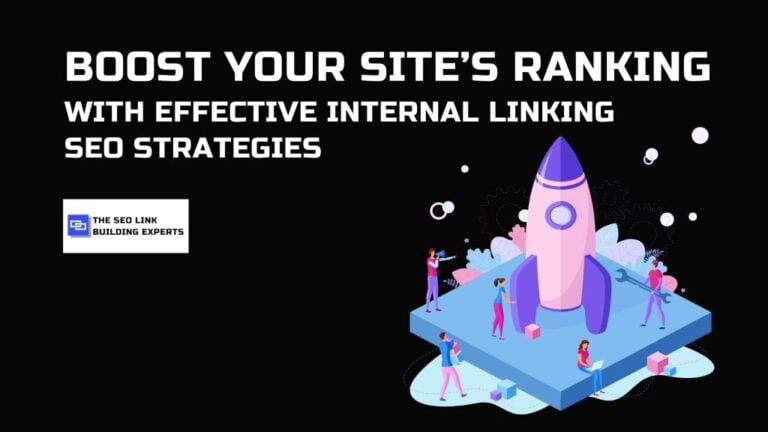Understanding No-Follow Links: Boost Your SEO Strategy Today
Here at the SEO Link Building Experts, we believe in the power of SEO to enhance our client’s online presence and increase their visibility. In this comprehensive guide, we will explore the concept of no-follow links and help you understand why they are crucial for your SEO strategy.
No-follow links are an integral part of your website’s link profile, and understanding how to leverage them effectively can boost your website’s ranking on search engine results pages. Our aim is to provide you with practical tips and insights on how to implement no-follow links in your SEO strategy successfully. Let’s get started!
Key Takeaways:
- Understanding the definition and purpose of no-follow links is crucial for your SEO strategy.
- No-follow links differ from regular links and were introduced by search engines to combat spamming and link manipulation.
- No-follow links contribute to your website’s overall link profile and can improve your website’s authority and referral traffic.
What Are No-Follow Links?
Before we explore the importance of no-follow links in SEO, let’s first understand what they are. No-follow links are hyperlinks that do not pass on link juice to the website they are pointing to. In other words, they do not contribute to the target website’s search engine rankings.
The concept of link follow or follow links, on the other hand, refers to hyperlinks that pass on link juice and contribute to the target website’s search engine rankings. This means that follow links are more valuable to a website’s SEO strategy, as they signal to search engines that other websites consider the target website as a reliable and authoritative source of information.
The no-follow attribute was introduced by search engines as a way to combat spammy and manipulative practices, such as buying links or excessively using exact match anchor text. By marking certain links as no-follow, website owners can indicate to search engines that they do not endorse or vouch for the content of the linked website. This helps maintain the integrity and credibility of search results.
Overall, no-follow links serve a distinct purpose in enhancing a website’s link profile and should not be disregarded in your SEO strategy.

Why Are No-Follow Links Important for SEO?
Understanding the importance of no-follow links in the context of your overall SEO strategy is crucial for achieving optimal results. While follow links are the traditional way of building link authority, no-follow links play an essential role in diversifying your link portfolio and protecting against negative SEO practices.
No-follow links signal to search engines that the link should not be taken into account when calculating a website’s authority. This means that while they don’t directly contribute to improving your search engine rankings, they do allow your website to create a more natural and diverse link profile.
Moreover, no-follow links can also drive referral traffic to your website. For example, if you have a no-follow link on a popular website, people may click on the link and visit your website. This can increase brand exposure and lead to potential customers finding your website through other means.
Incorporating no-follow links into your SEO strategy is also critical for protecting against negative SEO practices. Competitors or other entities may attempt to harm your website’s reputation by spamming it with low-quality follow links. However, by integrating no-follow links into your link profile, you can dilute the negative impact of these spammy links and maintain a healthy link profile.

Overall, while no-follow links may not have the same direct impact on your SEO as follow links, they are still an important way of diversifying your link portfolio, protecting against negative SEO, and driving referral traffic to your website.
The Benefits of Using No-Follow Links
Now that we understand what no-follow links are and why they are important for SEO, let’s dive into the benefits of using them in your strategy.
Improving Your Website’s Authority
No-follow links can actually improve your website’s authority in the eyes of search engines, as they demonstrate that your site has a balanced and natural link profile. By including a mix of no-follow and follow links, you show that you are not solely focused on manipulating search rankings with do-follow links.

Increasing Referral Traffic
No-follow links may not directly impact your search rankings, but they can still drive traffic to your website. When you include no-follow links on popular websites, they can attract visitors who are interested in your content and want to learn more.
For example, if you write a guest post on an industry blog and include a no-follow link to a relevant page on your website, readers who find the information valuable may click through to learn more. This can increase referral traffic and potentially lead to conversions.
Protecting Against Negative SEO Practices
No-follow links can also protect your website from negative SEO practices, such as spammy link building. If you only include do-follow links in your link profile, it can raise red flags with search engines and potentially lead to penalties.
By including a mix of no-follow and follow links, you demonstrate that your link profile is natural and not solely focused on manipulating search rankings. This can help protect your website from negative SEO practices and maintain its online reputation.
Overall, incorporating no-follow links into your SEO strategy can have numerous benefits for your website’s online presence. By improving your authority, driving referral traffic, and protecting against negative SEO practices, no-follow links can be a valuable addition to your link profile.
How to Identify and Implement No-Follow Links
Implementing no-follow links can be a bit tricky, but once you get the hang of it, it becomes second nature. Here are some practical tips for identifying and implementing no-follow links:
Identifying Existing No-Follow Links:
| Technique | Steps |
|---|---|
| Browser Plugins | Install browser plugins like NoFollow, Link Miner, or Check My Links, which can identify no-follow links on a webpage. |
| View Page Source | Right-click on a webpage and select “View Page Source.” Look for the rel=”nofollow” attribute in the code, which indicates that the link is no-follow. |
Adding No-Follow Attribute to New Links:
| Scenario | Steps |
|---|---|
| Adding Links Manually | Add rel=”nofollow” to the HTML code of the link, like this: <a href=”http://example.com” rel=”nofollow”>Link Text</a> |
| Using Plugins | Install plugins like Ultimate Nofollow, NoFollow Checkbox, or WP External Links that add a checkbox to the link insertion dialogue box to add the no-follow attribute. |
By following these techniques, you can easily identify and implement no-follow links on your website, helping you create a well-rounded link profile and improve your SEO strategy.

Best Practices for Using No-Follow Links
Now that we understand what no-follow links are and why they are important for SEO, let’s dive into some best practices for using them effectively:
- Use no-follow links for sponsored or paid content: If you have any sponsored or paid content on your website, it’s important to use no-follow links. This includes affiliate links, sponsored posts, and advertisements. Doing so will prevent Google from penalizing your website for violating their guidelines on disclosing paid content.
- Use no-follow links for user-generated content: If you allow user-generated content on your website, it’s important to use no-follow links for any links included in the content. This will prevent spammy links from negatively impacting your website’s link profile.
- Use no-follow links for links to low-quality sites: Sometimes, you may link to external websites that are low quality or spammy. In these cases, it’s important to use no-follow links to protect your website from any negative SEO impact.
- Maintain a balanced link profile: While no-follow links are an important part of your overall link profile, it’s important to maintain a balance between follow and no-follow links. Having too many no-follow links can signal to search engines that your website is trying to manipulate its link profile.
- Use descriptive anchor text: When using no-follow links, make sure to use descriptive anchor text that accurately reflects the content of the linked page. This will help search engines better understand the context of the link and improve the overall user experience for your website visitors.
By following these best practices, you can ensure that your no-follow links contribute positively to your overall SEO strategy.

Common Misconceptions About No-Follow Links
Now that we have explained the benefits and importance of no-follow links, let’s address some common misconceptions surrounding them.
Misconception 1: No-follow links are not useful for SEO.
Contrary to popular belief, no-follow links can still have a positive impact on your overall SEO strategy. While they may not directly contribute to your website’s ranking, they can still improve your link profile and referral traffic.
Misconception 2: No-follow links are harmful to your website’s SEO.
This is a common misconception among website owners, but it is not entirely accurate. No-follow links provide a way to protect your website from negative SEO practices and spammy links. They also help maintain a balanced link profile, which is beneficial for your website’s authority and credibility.
Misconception 3: No-follow links are easy to identify.
While it is true that search engines label no-follow links with a specific attribute, they are not always easy to identify. Some websites use complex coding or redirect chains that make it challenging to differentiate between follow and no-follow links.
Misconception 4: No-follow links are irrelevant for local businesses or small websites.
No-follow links can be valuable for any business or website, regardless of size or location. They offer a way to build and maintain a healthy link profile and protect against negative SEO practices.

The Future of No-Follow Links in SEO
As with any aspect of SEO, the future of no-follow links is prone to change. In the past, no-follow links were seen as a way to control and manage link spam. However, with the evolving nature of search engine algorithms, the value of no-follow links may shift.
Recently, Google announced changes to how they treat no-follow links. They are now considered as hints for ranking purposes rather than directives. This means that no-follow links may now impact your website’s visibility and authority in search results, albeit to a lesser degree than follow links.
Additionally, it’s likely that search engines will continue to refine their algorithms and update their policies regarding no-follow links. As a result, it’s important to stay informed and adapt your SEO strategy accordingly.

One thing is for sure, no-follow links will continue to be a vital tool for managing your website’s link profile and protecting against negative SEO practices. By leveraging the potential of no-follow links and staying up to date with any changes, you can future-proof your SEO strategy and maintain a successful online presence.
Case Studies: Successful Implementations of No-Follow Links
Implementing no-follow links in your SEO strategy may seem counterintuitive, but many businesses have successfully used them to their advantage. Let’s take a look at a few case studies of companies that have effectively utilized no-follow links:
| Company | Industry | No-Follow Link Strategy | Results |
|---|---|---|---|
| HubSpot | Marketing | No-followed all external links in their blog comments section | Significantly reduced spam and improved user experience |
| NerdWallet | Finance | No-followed links in user-generated content | Prevented negative SEO practices and maintained website authority |
| Capterra | Software | No-followed links in user reviews | Enhanced website’s overall link profile and increased referral traffic |
These case studies demonstrate how no-follow links can be used effectively in a variety of industries and settings. By no-following certain links, companies were able to protect against negative SEO practices, improve user experience, and enhance their website’s authority and link profile.

It’s important to note that every business is different, and what works for one may not work for another. However, exploring case studies of successful implementations of no-follow links can provide valuable insights and inspiration for your own SEO strategy.
Measuring the Impact of No-Follow Links on SEO
One of the challenges of incorporating no-follow links into your SEO strategy is measuring their impact. Unlike follow links, which contribute directly to your website’s link profile, no-follow links offer indirect benefits that may not be immediately visible. However, measuring the impact of no-follow links is still necessary to evaluate the effectiveness of your strategy.
One way to measure the impact of no-follow links is to track your referral traffic. Even though no-follow links do not pass link equity, they can still generate traffic to your website if they are placed on high-traffic sites. By monitoring the referral traffic from your no-follow links, you can assess their impact on your overall website traffic.
Another metric to consider is brand exposure. No-follow links may not pass link juice, but they can still increase your website’s visibility and credibility. By monitoring your online mentions and brand searches, you can quantify the indirect impact of your no-follow links on your brand reputation.
Finally, it’s important to keep an eye on your website’s search engine rankings. While no-follow links do not contribute directly to your website’s authority, they can still affect your search engine rankings indirectly. By monitoring your website’s search engine performance after implementing no-follow links, you can evaluate their effectiveness in enhancing your SEO strategy.
| Metrics for Measuring the Impact of No-Follow Links on SEO: |
|---|
| Referral traffic |
| Brand exposure |
| Search engine rankings |
Measuring the impact of no-follow links may require more effort than measuring the impact of follow links, but it’s equally important for optimizing your SEO strategy. By tracking your referral traffic, brand exposure, and search engine rankings, you can evaluate the effectiveness of your no-follow links and adjust your strategy accordingly.

Integrating No-Follow Links into Your SEO Strategy
Now that you understand the importance and benefits of no-follow links, it’s time to integrate them into your overall SEO strategy. Here are some tips to help you get started:
- Identify pages or links on your site that may benefit from the use of no-follow links, such as user-generated content or sponsored posts.
- Use a mix of follow and no-follow links to maintain a balanced link profile and avoid overusing no-follow links.
- When linking to external sources, consider using no-follow links to prevent potential negative SEO impact from low-quality or spammy sites.
- Regularly monitor and analyze the performance of your no-follow links to ensure they are contributing positively to your SEO efforts.
By following these best practices and incorporating no-follow links strategically into your SEO strategy, you can enhance your website’s authority, drive referral traffic, and protect against negative SEO practices.

We encourage you to experiment with no-follow links and find innovative ways to leverage their potential. Remember to approach your SEO strategy holistically and with a long-term perspective, continually adapting and optimizing as needed. With the right approach, no-follow links can be a valuable asset to your overall SEO efforts.
No-Follow Links Conclusion
As we wrap up this article, we hope you have gained a better understanding of the power of no-follow links in your SEO strategy. By incorporating them intelligently and following best practices, you can enhance your website’s authority, protect against negative SEO, and drive referral traffic.
Remember to identify and implement no-follow links on your website, and follow the best practices for using them. Measuring the impact of no-follow links on your SEO efforts and integrating them seamlessly into your overall strategy can maximize their benefits.
Take Action Today!
Don’t wait any longer to harness the potential of no-follow links. Start by exploring relevant case studies and finding ways to implement them into your own strategy. With a bit of planning and execution, you will see positive results in no time.
Thank you for reading! We hope this article has been informative and helpful in boosting your SEO strategy with no-follow links. Stay tuned for more insightful content from our team.











